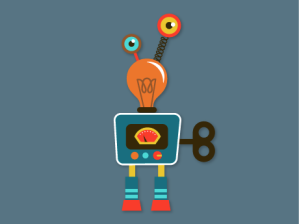10 Signs of a 21st Century Classroom

One of my early challenges in coordinating my school’s STEM efforts has been determining exactly what is meant by a STEM school. There are probably as many answers to this question as there are educators, but I have decided to focus on what goes on inside the classroom. Not just in a science or math class, but in all classrooms. There are some activities that have traditionally been done well by the STEM disciplines that can be cross applied to all subjects.
I have narrowed these down to a list of 10 signs of a 21st Century classroom. I have been slowly introducing these concepts to the faculty at my school through informal discussions and incremental training during in-service days.
A few notes:
- I am sure that there are many similar lists in existence. This one is originally based on a reference I found in the article “Considerations for Teaching Integrated STEM Education”.
- I have opted to drop the word “STEM” from this list because these ideas, while often associated with science and math fields, are applicable to and indeed seen in all disciplines.
- Each of the following could fill an article or a book by itself, but I have provided just a few explanatory lines for clarification.
And, in no particular order:
Technology Integration
Rather self-explanatory and covered very well in other sections of this site. It involves more than just use of technology, but students using technology to achieve goals in a different way than was possible before.
Collaborative Environment
Many students prefer to work alone. However, this is an option not often granted in careers. In addition, collaboration fosters the development of new ideas and exposes students to opposing viewpoints.
Opportunities for Creative Expression
This is where many schools will add an ‘A’ to form STEAM. Creative expression not only yields surprising outbursts of understanding, but also builds student confidence.
Inquiry Based Approach
Much could be shared here about the difference between guided inquiry vs. open inquiry. The core idea of students approaching a new topic in the context of answering a question is a cornerstone of the current teaching models.
Justification for Answers
The largest problem that I encounter in my students reasoning is an almost complete lack of it. Fostering an expectation of well-developed thoughts encourages students to approach a problem from a number of angles and discover what they truly believe.
Writing for Reflection
Journal writing is often considered a dying art. This is a shame because as self-reflection goes, so does strong metacognitive reinforcement of learning. If students use a blog for reflection, they may even be surprised to learn that others are interested in their thoughts.
Use of a Problem Solving Methodology
Problem solving goes well beyond engineering classrooms. Having a go-to method of approaching new difficulties can aid students through writing a short story or solving an economics challenge.
Hands-on Learning
Long a staple of science courses, labs provide a wonderful opportunity to provide students with another anchor for learning. But it doesn’t stop there. Any opportunity to connect to the outside world is a chance to enhance student achievement.
Teacher as Facilitator
Modern realization of best practice in education no longer supports the idea of the teacher as an authoritarian figure standing in the front of the room scrawling on a chalkboard. As educators, our role can be reshaped so that we work beside students providing support and encouragement for their personal journey.
Transparent Assessment
Students perform better and form stronger connections with material if they are able to understand what demonstration of knowledge will be expected of them. Portfolios, rubrics, and formative assessments can help meet this goal.
I'd be interested in hearing the ideas of others who have introduced an integrated STEM approach at their schools.